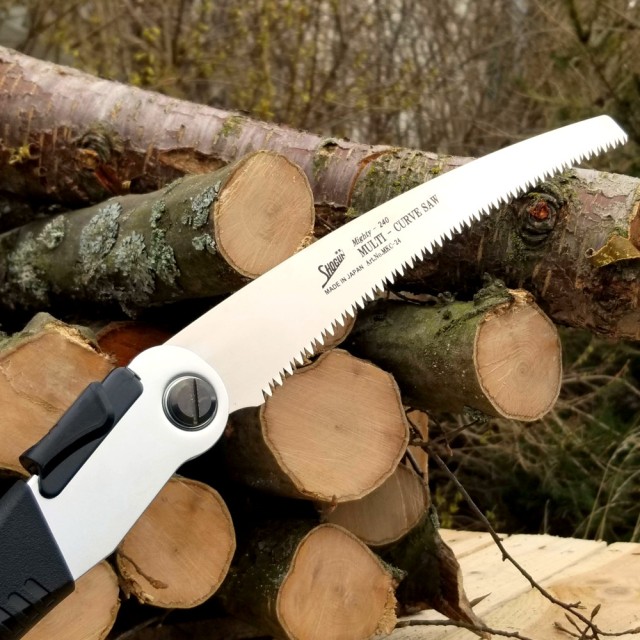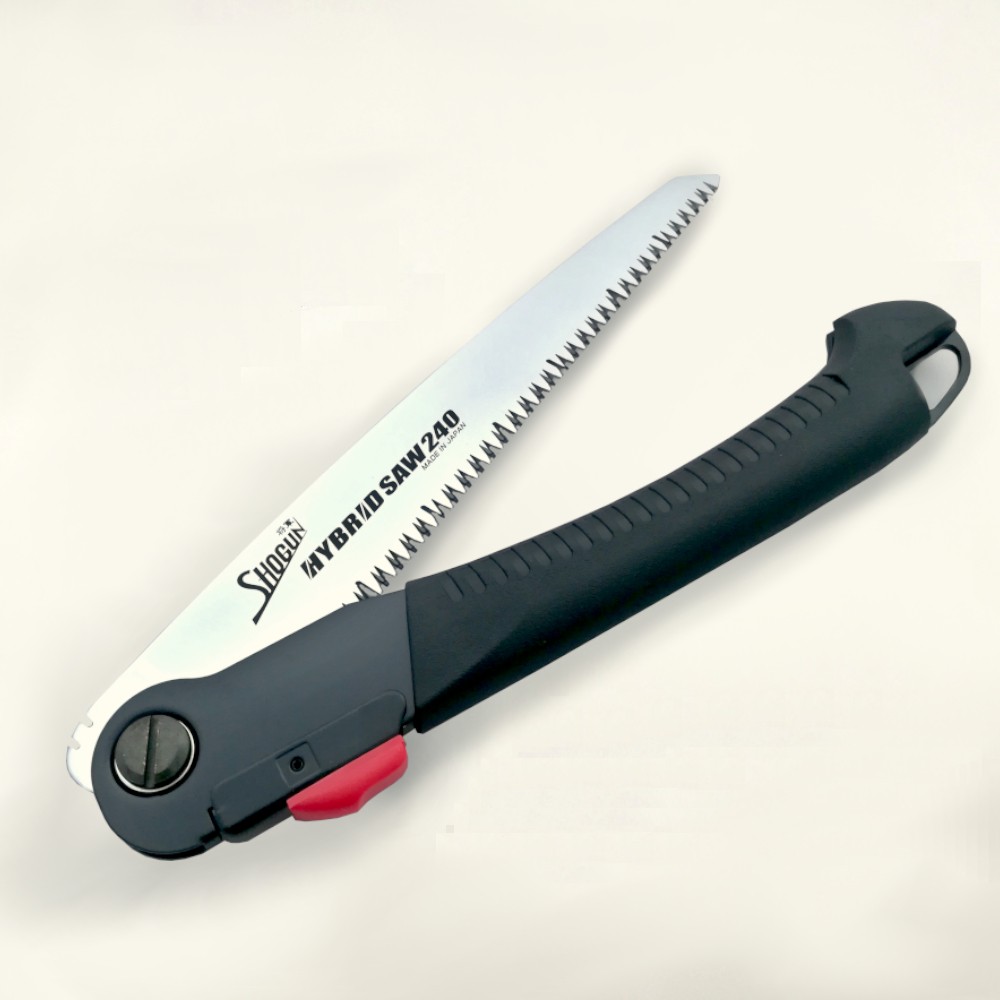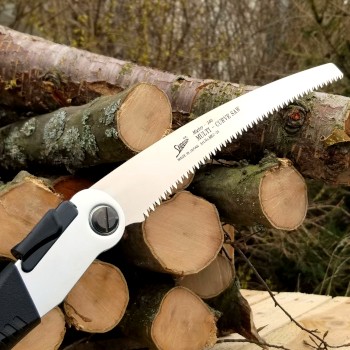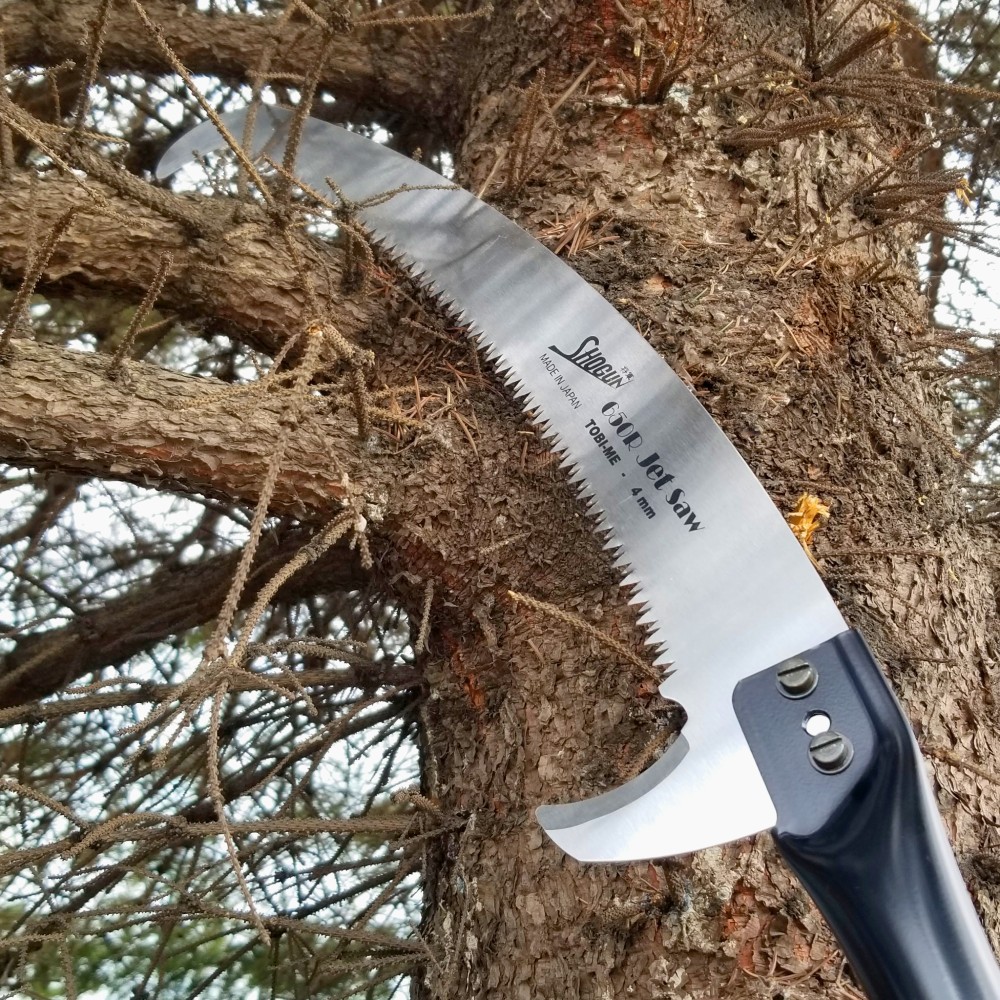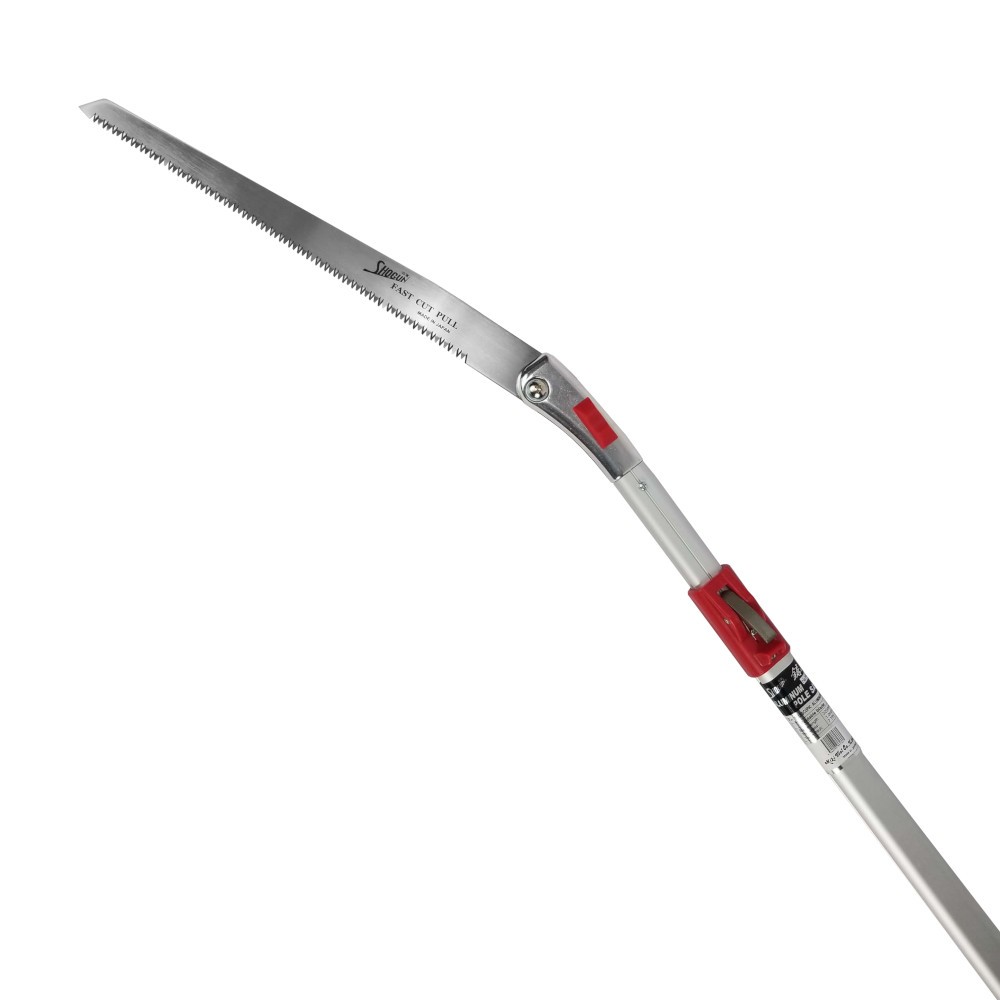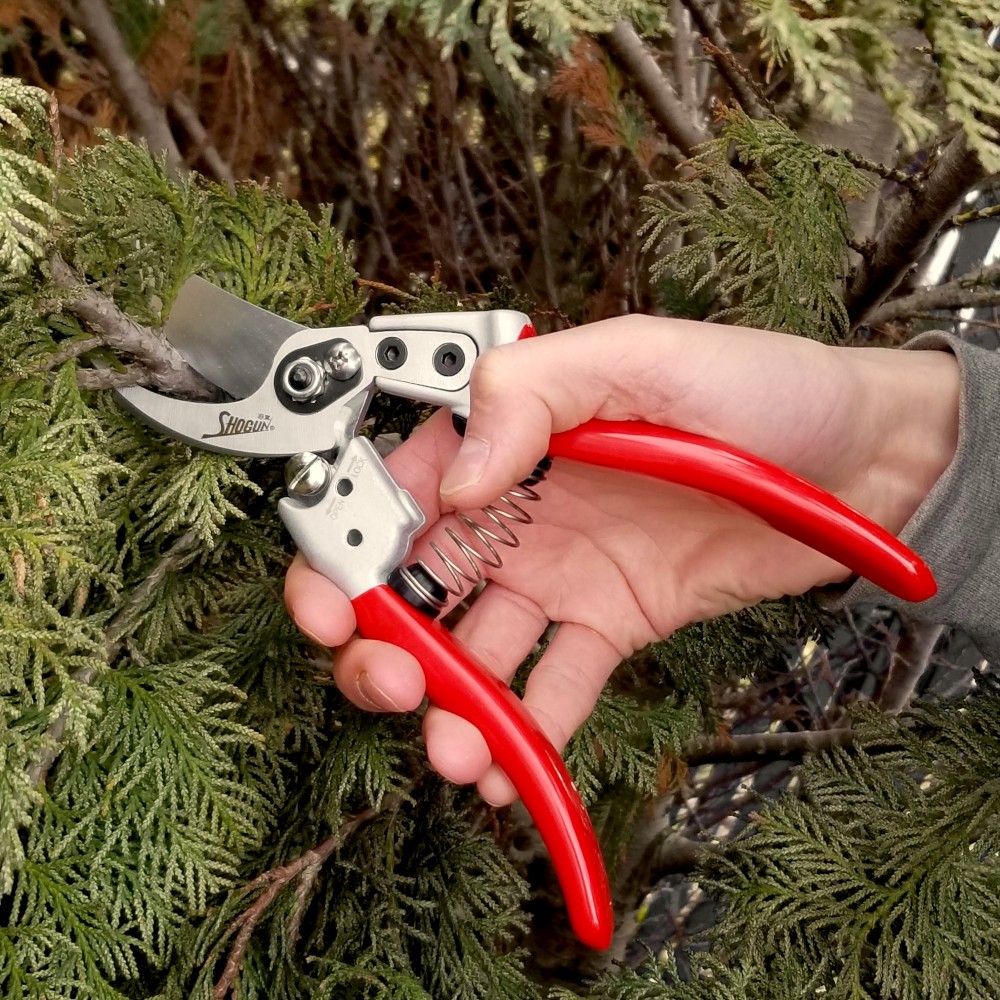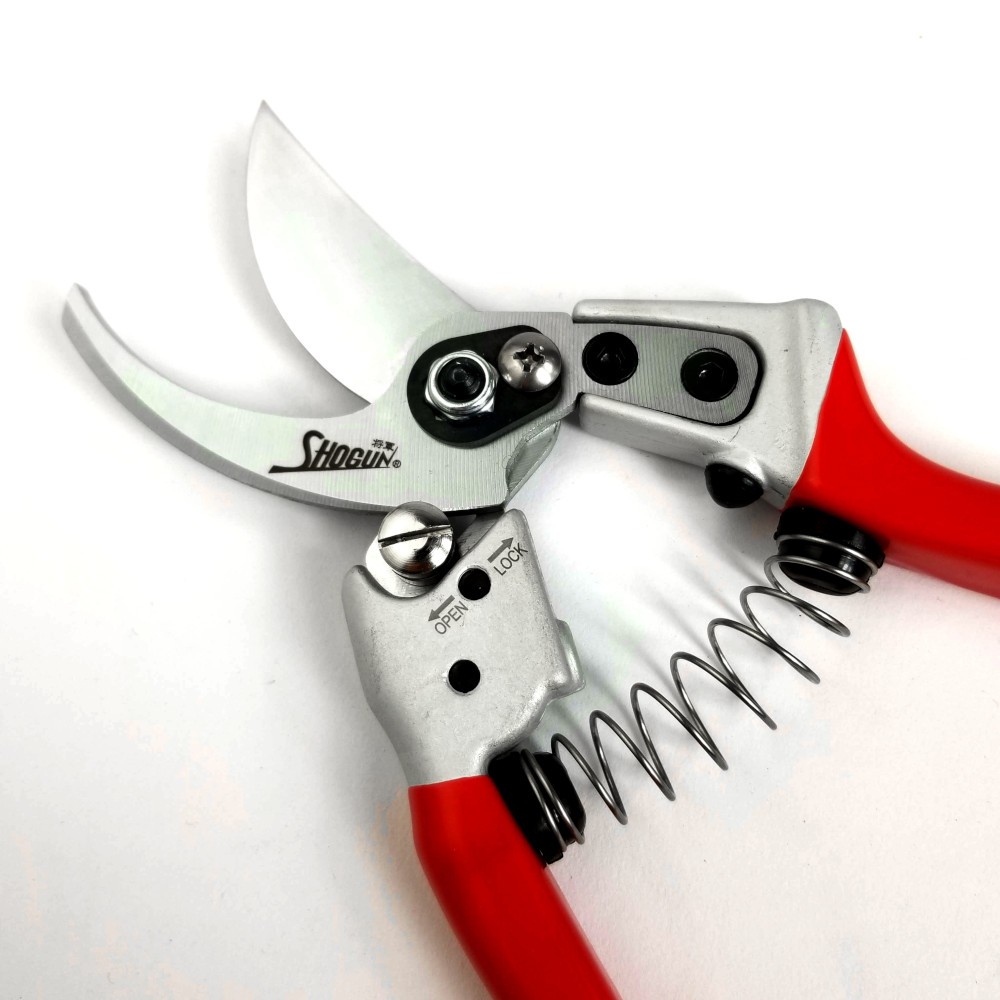Pruning fruit and forest trees with Shogun tools.
The Japanese ancient wisdom says that pruning tree branches is one of the most important maintenance procedures in both garden and forest. It allows controlling their growth, removing sick and dead tissue, and shaping their crown. This procedure should be performed regularly to keep the forest healthy and achieve abundant harvest in the garden.
However, how to do it safely for yourself and the trees? In this article, we will discuss how to easily and effectively prune tree branches using hand saws, telescopic saws, and secateurs.
Saws for cutting trees and fresh wood have longer teeth than classic saws for dry wood. They often have a folding construction and a slightly curved shape of the blade.
Shogun saws leave a smooth and well-finished place after cutting - this is particularly important in the case of fruit trees, which are sensitive to the effects of bacterial cancer.
.
When pruning fruit tree branches with secateurs, remember to cut the branches at a 45-degree angle. It is also important to avoid cutting branches too close to buds, as this can damage the buds and inhibit the growth of the tree.
When should we prune trees?
Pruning fruit trees is best done during the dormant period of the plants, which is usually in early spring before the start of intensive growth or in the fall after the end of the growing season and before the onset of frost.
For spring pruning, the best time is before bud development to allow the plant access to light and facilitate its growth during the growing season. The optimal pruning time depends on the climatic conditions in the region and the tree species. Usually, the best time is from February to March, before the temperature starts to rise and the plant begins intensive growth.
On the other hand, fall pruning is also a good time to remove diseased, damaged, or dead branches. This way, the tree will be ready for winter dormancy and will be ready for vigorous growth in the spring.
Some fruit trees require pruning both before and after fruiting, but there are also those that are best pruned after the end of the fruiting season.
Trees such as apple, pear, plum, and cherry are usually pruned after fruit harvest. This is important because pruning after fruiting allows for the removal of unnecessary branches and provides better lighting and ventilation in the tree crown. This enables the development of stronger and healthier branches, which contributes to obtaining larger yields in the future.
Pruning after fruiting may involve removing damaged or dead branches, pruning too long branches, removing shoots growing from the trunk, and other care procedures. It is important to prune after fruiting early enough so that the tree has time to regenerate before the next growing season.
In the case of fruit trees such as peaches and apricots, it is better to prune in the spring before buds appear. However, it is worth remembering that each tree is different and requires an individual approach, so it is worth getting to know the needs of your tree and following general principles, adapting them to the individual needs of the plant.
How to prune trees?
How to prune fruit tree branches?
- Remove diseased and dead branches - they are usually easy to identify because their bark is dry, flaky, and often changes color. Removing dead branches will help prevent the spread of diseases and increase the amount of fruit on healthy branches.
- Prune branches from the bottom - when pruning fruit tree branches, always start from the bottom, as this allows you to control the cutting direction and avoid damaging the rest of the tree. When pruning larger branches, it is recommended to use hand saws, and for smaller branches - pruning shears.
- Cut branches at an angle - always cut fruit tree branches at a 45-degree angle when pruning.
- Spacing between branches - when pruning fruit tree branches, it is also important to remember to maintain spacing between the branches to ensure proper ventilation and lighting for the remaining branches.
- Shaping the crown - shaping the crown is important to ensure even distribution of fruit on the tree and provide optimal access to light. When shaping the crown, it is important to maintain balance between the branches to avoid excessive load on one side of the tree.
REMEMBER TO USE GARDEN PRUNING SEALER!
Protect every cut with pruning sealer - your trees will be less susceptible to bacterial infiltration and the development of dangerous bacterial cankers.
Comments
By accepting you will be accessing a service provided by a third-party external to https://woodfan.pl/
 English
English  Polski (PL)
Polski (PL)
 German
German
